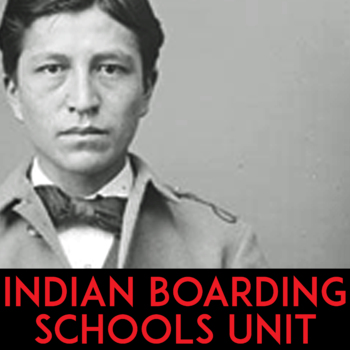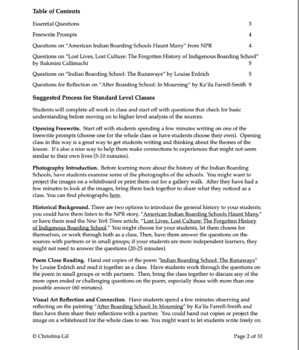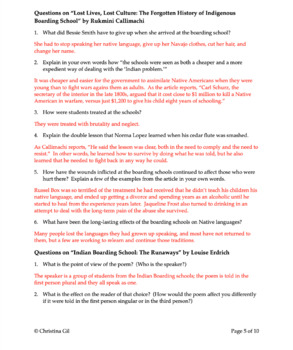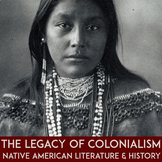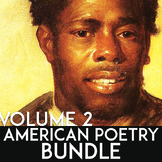Native American History & Literature: Indian Boarding Schools | Louise Erdrich
- Zip
Also included in
- Ready to integrate more Native voices into your curriculum this year? While trickster tales, creation myths, and other traditional stories definitely have their place in an American literature curriculum, it’s important that your students don’t get the message that Indigenous literature is only somPrice $8.97Original Price $11.91Save $2.94
- Tired of students telling you that poetry isn’t relevant to their lives? You can’t really be surprised they act this way when they’ve been lead to believe that reading poetry means trying to figure out some inane, obscure puzzle. And when they’ve only experienced poetry written by old white men whoPrice $12.97Original Price $22.82Save $9.85
- Want to immerse your students in the diversity of this country by studying engaging poetry together? Your students will learn so much when they explore the essential questions of American Literature with these ready-to-go lessons.A collection of questions on 24 poems, from the mid 20th century to tPrice $19.97Original Price $45.60Save $25.63
Description
Looking for a resource on the Indian Boarding Schools that will help your students understand how victims of mistreatment and abuse resist oppression in their own ways?
In an effort to “kill the Indian to save the man,” the assimilation policies of the United States caused a great deal of pain to the tens of thousands of young people who were displaced from their homelands and taken to horrific institutions.
While the Native American children who were forced to cut their hair and forget their cultures suffered in the abusive environments, they were not without their own ways of rebelling against the oppression. In this two-day unit, students will explore the history and the contemporary legacy of the Indian Boarding Schools by examining nonfiction articles, photographs, “Indian Boarding School: The Runaways” by Louise Erdrich, and visual art by Ka’ila Farrell-Smith.
By the end of the unit, your classes will have a deeper understanding of Native American history, literature, and resistance.
*All proceeds from this resource will be donated to the Lakota People's Law Project Action Center*
When you teach your students about the Boarding Schools this resource you will:
- Start your unit with freewrite prompts that will help students to focus, get ready to work, and begin to explore the essential questions of the lesson.
- Strengthen your students’ close reading skills by taking them through a close reading of a poem with the no-prep questions and handouts.
- Easily review the questions using the extensive answer keys which quote the important passages, so there is no guessing on your part as to which parts of the text are most important.
- Incorporate important social justice issues into your lesson plans without sacrificing rigor or student interest.
- Differentiate for honors or more reluctant learners with the concrete suggestions for lesson plans.
- Empower different learning styles with creative writing, group work, dynamic discussion questions, quiet reflection, engaging videos, contemporary poetry, nonfiction resources, and visual art.
- Add rigor to your lesson plans when your students analyze point of view, figurative language, diction, enjambment, allusion, alliteration, and theme in poetry with the structured questions and activities.
- Empower your classes to examine our shared history and confront the wrongs of the past.
Pairings: This mini unit would pair nicely with a unit on The Absolutely True Diary of a Part-Time Indian, Ceremony, Love Medicine or any unit or text that deals with history, Native American culture, or Native American Literature.
There are no lectures or power points here—students will do the work themselves, with guidance from you. Rather than telling them what the texts mean, you will be empowering them with the confidence and skills to tackle challenging texts on their own.
Want to see what you’ll get before you buy? Click on the preview button above to see the entire teacher’s guide to the unit.

